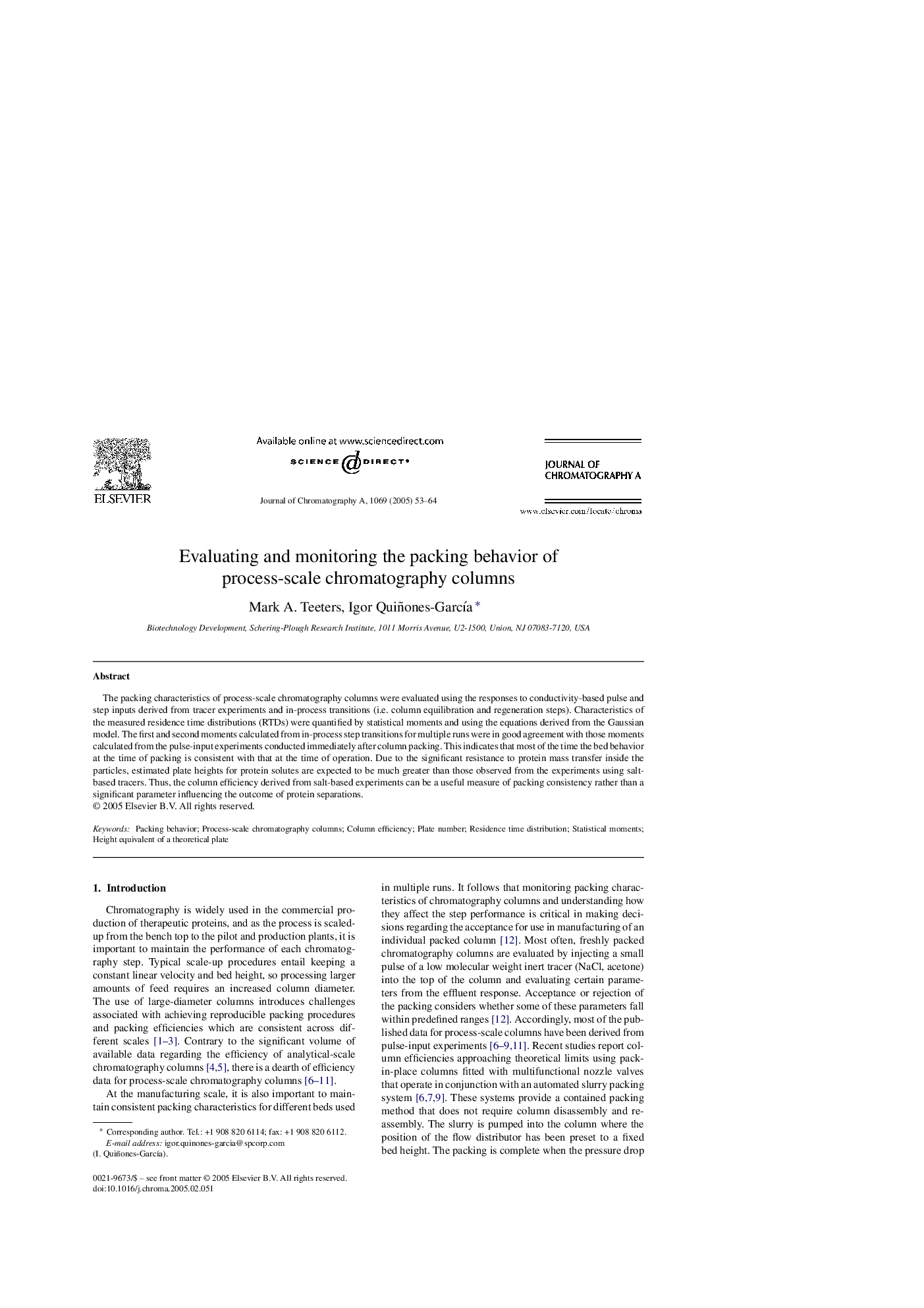| Article ID | Journal | Published Year | Pages | File Type |
|---|---|---|---|---|
| 10548066 | Journal of Chromatography A | 2005 | 12 Pages |
Abstract
The packing characteristics of process-scale chromatography columns were evaluated using the responses to conductivity-based pulse and step inputs derived from tracer experiments and in-process transitions (i.e. column equilibration and regeneration steps). Characteristics of the measured residence time distributions (RTDs) were quantified by statistical moments and using the equations derived from the Gaussian model. The first and second moments calculated from in-process step transitions for multiple runs were in good agreement with those moments calculated from the pulse-input experiments conducted immediately after column packing. This indicates that most of the time the bed behavior at the time of packing is consistent with that at the time of operation. Due to the significant resistance to protein mass transfer inside the particles, estimated plate heights for protein solutes are expected to be much greater than those observed from the experiments using salt-based tracers. Thus, the column efficiency derived from salt-based experiments can be a useful measure of packing consistency rather than a significant parameter influencing the outcome of protein separations.
Related Topics
Physical Sciences and Engineering
Chemistry
Analytical Chemistry
Authors
Mark A. Teeters, Igor Quiñones-GarcÃa,
